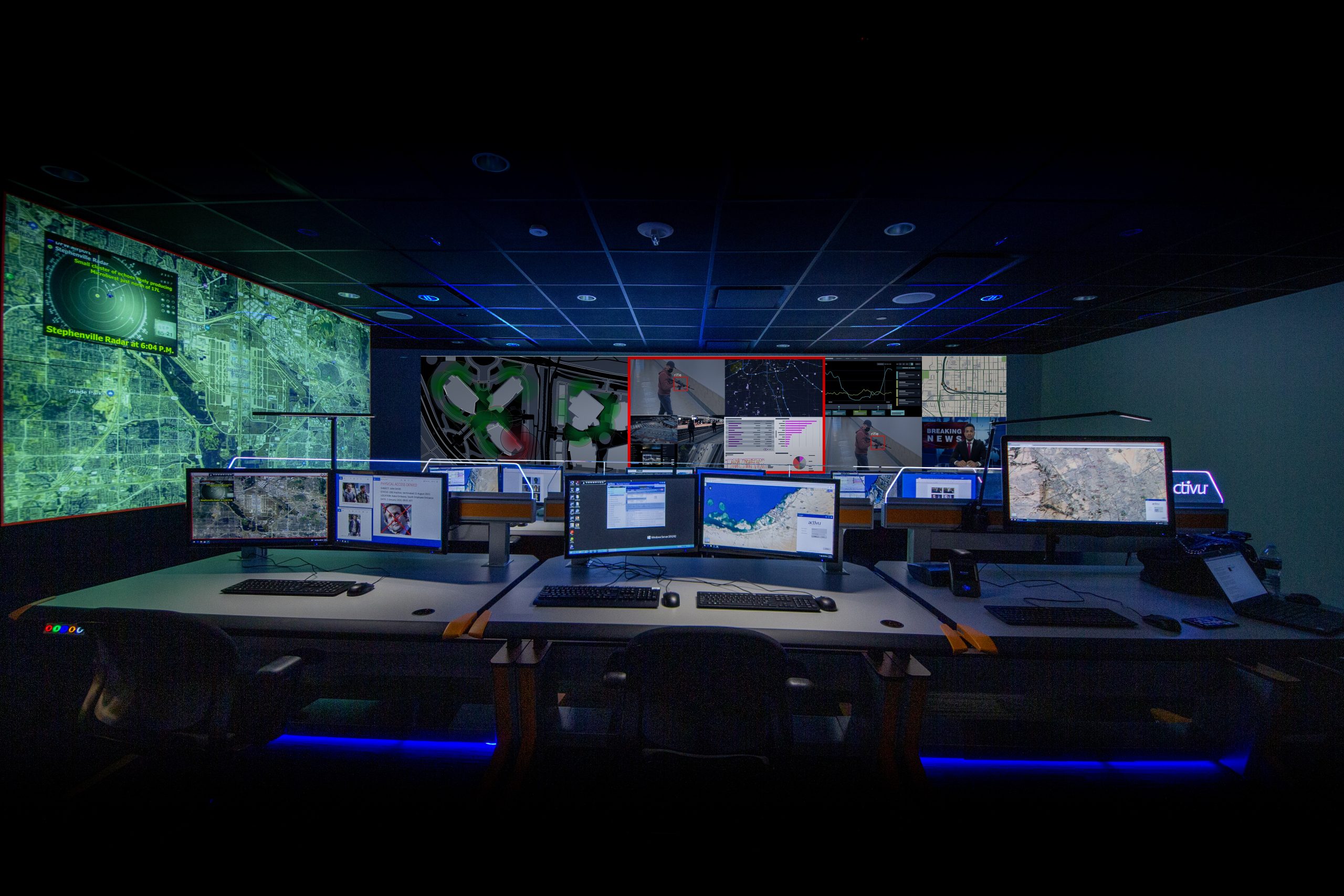Law enforcement and public safety professionals often have the latest battle-tested technologies available to them in the command center and in the field, but the pace of change can be daunting to follow and evaluate. Here are three key trends to look for that will keep your operations ahead of the curve.
Information Anywhere

The rapid mobilization of all forms of communication, information, and work can benefit the decidedly less-mobile RTCC as well. In fact, the most innovative new command centers across a number of industries are not command centers at all.
From smart cities to power utilities to transit to EOCs, more command centers and control rooms are embracing control room software platforms, like vis/ability from Activu, that make it easier for teams — in real-time — to move information and collaborate in multiple places at once, from smartphones and laptops. On-scene, mobile command, at the RTCC, or even from home, forward-thinking operations are embracing virtual video walls and command centers, for more efficient collaboration around an incident, and faster resolution.
Automated Situational Awareness
Even the best communications tools, video cameras, and display walls are only as good as the information flowing into them — and it can be a lot! So much, in fact, that fatigue and human error from information overload is easily one of the biggest challenges faced by any command center professional.
The fastest way to reduce response time for a critical incident is to know about it automatically and as early as possible, whether the moment it happens, or even before it’s happened. No, this is not Minority Report, but it’s not too far off. Modern VMS cameras can be augmented through systems like vis/ability to scan for threats and “jump” into your operational picture automatically when threats are detected. Tools like Omnilert detect guns in real-time video feeds, before a shot is fired; then vis/ability automatically groups cameras, geolocated maps, and any other relevant information into a targeted, interactive canvas on command center video walls, breakout rooms, and remote devices. Even better, there’s no limit to how many concurrent alerts or incidents can be managed since the core of vis/ability is a virtual command center — it goes where you go and where you display it.
Hardware Agnostic
Managers of command centers are reevaluating their IT approach under constant budget pressure, support cost concerns, and fear of vendor lock-in. In a more hardware-light world, even the command center is on a weight-loss plan.
Outdated command center platforms that require tons of extra cabling and proprietary boxes for each workstation have gone the way of the dinosaur. Newer command centers are building in flexibility through Activu A/V-over-IP systems, which run on software and take advantage of the network for collaboration and display. Many are moving to the secure cloud for even more future-proof operations.
Conclusion
Whatever your operational technology plans, look for these latest innovations, and more, to keep your operations flexible, streamlined, and efficient into the future.

